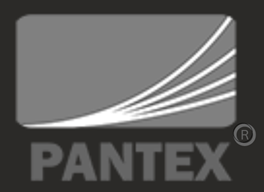The urea solution is clear, non-toxic and safe to handle. Since urea has corrosive impact on metals like aluminum, AdBlue® is stored and transported in special containers. These containers are typically made of stainless steel. Vehicles’ selective catalytic reduction (SCR) systems and AdBlue® dispensers are designed in a manner that there is no corrosive impact of urea on them. It is recommended that AdBlue® be stored in a cool, dry, and well-ventilated area that is out of direct sunlight. Bulk volumes of AdBlue® are compatible for storage within polyethylene containers (HDPE, XLPE), fiberglass reinforced plastic (FRP), and steel tanks. Our product in 10 L size are ready in our shop for you.
What Is AdBlue®?
More about the AdBlue® background:
Diesel engines are typically operated with a lean burn air-to-fuel ratio (over-stoichiometric ratio) to ensure the full combustion of soot and to prevent them from exhausting unburnt fuel. The excess air leads to the generation of NOx, which are harmful pollutants, from nitrogen in the atmosphere. SCR is used to reduce the amount of NOx released into the atmosphere. DEF from a separate tank is injected into the exhaust pipeline, and the exhaust heat decomposes it to ammonia. Within the SCR catalyst, the NOx are reduced by the ammonia into water and nitrogen, which are both non-polluting. The water and nitrogen are then released into the atmosphere through the exhaust.
SCR was applied to automobiles by Nissan Diesel Corporation, and the first practical product “Nissan Diesel Quon” was introduced in 2004. With the cooperation of the oil and chemical industry, a 1,300-station infrastructure to supply DEF was prepared by September 2005 in Japan.
In 2007, the United States Environmental Protection Agency (EPA) enacted requirements to significantly reduce harmful exhaust emissions. To achieve this standard, Cummins and other diesel engine manufacturers developed an after-treatment system that includes the use of a diesel particulate filter (DPF).
As the DPF does not function with low-sulfur diesel fuel, diesel engines that conform to 2007 EPA emissions standards require ultra-low-sulfur diesel (ULSD) fuel to prevent damage to the DPF. After a brief transition period, ULSD fuel became common at fuel pumps in the United States and Canada.
The 2007 EPA regulations were meant to be an interim solution to allow manufacturers time to prepare for the more stringent 2010 EPA regulations, which reduced NOx levels even further. In 2008, the concerns about compliance shifted to the infrastructure for DEF distribution.
The injection rate of DEF into the exhaust depends on the specific after-treatment system, but is typically 2–6% of diesel consumption volume. This low dosing rate ensures long fluid refill intervals and minimizes the tank’s size and intrusion into vehicle packaging space. An electronic control unit adjusts the addition of fluid in accordance with parameters such as NOx level in exhaust gas (before catalytic converter, after catalytic converter, and possibly between catalytic converters if there is more than one), current ammonia filling level, engine operating temperature and speed.


